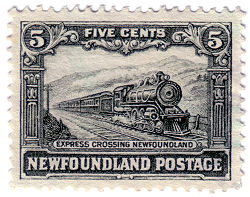Narrow-gauge railways in Canada
| By transport mode | ||||||||||||||||||||||||||||||||||||||||||||||||||||||||||||||||||||||||||||||||||||||||||||||||||||||||||||||||
|---|---|---|---|---|---|---|---|---|---|---|---|---|---|---|---|---|---|---|---|---|---|---|---|---|---|---|---|---|---|---|---|---|---|---|---|---|---|---|---|---|---|---|---|---|---|---|---|---|---|---|---|---|---|---|---|---|---|---|---|---|---|---|---|---|---|---|---|---|---|---|---|---|---|---|---|---|---|---|---|---|---|---|---|---|---|---|---|---|---|---|---|---|---|---|---|---|---|---|---|---|---|---|---|---|---|---|---|---|---|---|---|---|
| ||||||||||||||||||||||||||||||||||||||||||||||||||||||||||||||||||||||||||||||||||||||||||||||||||||||||||||||||
| By size (list) | ||||||||||||||||||||||||||||||||||||||||||||||||||||||||||||||||||||||||||||||||||||||||||||||||||||||||||||||||
| ||||||||||||||||||||||||||||||||||||||||||||||||||||||||||||||||||||||||||||||||||||||||||||||||||||||||||||||||
| Change of gauge | ||||||||||||||||||||||||||||||||||||||||||||||||||||||||||||||||||||||||||||||||||||||||||||||||||||||||||||||||
| ||||||||||||||||||||||||||||||||||||||||||||||||||||||||||||||||||||||||||||||||||||||||||||||||||||||||||||||||
| By location | ||||||||||||||||||||||||||||||||||||||||||||||||||||||||||||||||||||||||||||||||||||||||||||||||||||||||||||||||
| ||||||||||||||||||||||||||||||||||||||||||||||||||||||||||||||||||||||||||||||||||||||||||||||||||||||||||||||||

| ||||||||||||||||||||||||||||||||||||||||||||||||||||||||||||||||||||||||||||||||||||||||||||||||||||||||||||||||


Although most
The largest systems in the country were the
Almost all
Newfoundland
Construction on the 3 ft 6 in (1,067 mm)
After the
The Newfoundland Railway was the longest narrow-gauge system in North America at the time of its abandonment in September 1988. It was also the last commercial common carrier narrow-gauge railway in Canada, since the White Pass & Yukon had closed earlier in the decade.
Prince Edward Island
When the 3 ft 6 in (1,067 mm)
Nova Scotia
The first narrow-gauge railway in Canada was not a common carrier, but the 3 ft 6 in (1,067 mm) Lingan Colliery Tramway built in 1861 on Cape Breton Island north of Sydney. Cars were pulled by horses until a 0-4-0 saddle tank locomotive arrived in 1866 for the final year of operation.[1] The Glasgow and Cape Breton Coal and Railway Company operated the first Canadian 3 ft 6 in (1,067 mm) gauge railway from 1871 to 1893 with 41 miles (70 kilometers) of branch lines linking several mines to Sydney.[2]
New Brunswick
The
Quebec
The
Ontario

In Ontario, the
Yukon

Yukon was formerly home to the Klondike Mines Railway.
The only narrow-gauge system still in operation in the country is the 3 ft (914 mm) gauge White Pass and Yukon Route. The WPYR was built as a common carrier but closed in 1982 only to reopen in 1988 to haul tourists from cruise ships docking at Skagway, Alaska through White Pass on the Canada–United States border to Bennett, British Columbia, and more recently onto Carcross, Yukon. It uses some rolling stock from the now-defunct 3 ft 6 in (1,067 mm) Newfoundland Railway after changing the trucks.
British Columbia
BC has had a long history with narrow-gauge railways starting with the horse-drawn and gravity-assisted Seton Lake tramway in 1858, and then to the 3 ft (914 mm) gauge coal mine railways at Nanaimo. Coal was moved to the pier at Departure Bay. Other railways sprang up including the Kaslo and Slocan Railway, the Columbia and Western Railway near Trail, and the
Alberta
There were several 3 ft (914 mm) mining systems in the Drumheller area. An extensive narrow-gauge line was built in the foothills to haul coal about 1890 but was soon
The North Western Coal and Navigation Company, constructed a 3 ft (914 mm) narrow-gauge line which began operations from Lethbridge to Dunmore, Alberta beginning in the fall of 1885. In 1893 Canadian Pacific Railway, leased the line and later purchased it in 1897, and then converted it to standard gauge. Additionally the North Western Coal and Navigation Company constructed another 3 ft (914 mm) narrow-gauge line which ran from Lethbridge to Great Falls, Montana, and was opened for use in the fall of 1890.
The line was later converted to standard gauge in 1901, and was soon afterwards sold to two different buyers;
This unique structure was used by North Western Coal and Navigation Company, and later on after selling the railroad by Great Northern Railway (U.S.) and Canadian Pacific Railway. In 1915, Canadian Pacific Railway split the Train Station in half and hauled their portion north across the Canada–United States border and continued to use it until the late 1960s when it was closed. At the same time, Great Northern Railway (U.S.) hauled their portion of the station south of the Canada–United States border, and used it until the early 1930s.
Currently the International Train Station Depot is located at the Galt Historic Railway Park, in the County of Warner No. 5, Alberta, and is open to the public.
See also
- Canadian narrow gauge
- List of historic BC Narrow Gauge railways
References
- ^ Lavallee 1972, p. 11.
- ^ Lavallee 1972, pp. 16-17 & 112.
- ^ Lavallee 1972, pp. 27-28 & 92.
- ^ "Surviving Steam Locomotives in Ontario". SteamLocomotive.com.
- Beaumont, Ralph (1977). Steam Trains to the Bruce. Cheltenham, Ontario: The Boston Mills Press. ISBN 0-919822-21-5.
- Beaumont, Ralph; Filby, James (1980). Running Late on the Bruce. Cheltenham, Ontario: The Boston Mills Press. ISBN 0-919822-32-0.
- Clarke, Rod (2007). Narrow Gauge Through the Bush - Ontario's Toronto Grey & Bruce and Toronto & Nipissing Railways. Streetsville, Ontario: Beaumont and Clarke, with the Credit Valley Railway Company. ISBN 978-0-9784406-0-2.
- Cooper, Charles (1982). The Narrow Gauge For Us - The Story of the Toronto and Nipissing Railway. Erin, Ontario: The Boston Mills Press. ISBN 0-919822-72-X.
- Lavallee, Omer (1972). Narrow Gauge Railways of Canada. Montreal: Railfair. ISBN 0-919130-21-6.
- Lavallee, Omer (2005). Narrow Gauge Railways of Canada. revised by Ronald S. Ritchie (expanded and revised ed.). Markham, Ontario: Fitzhenry and Whiteside. ISBN 1-55041-830-0.
- McIlwraith, Thomas F. (1963). The Toronto Grey and Bruce Railway 1863-1884. Toronto: Upper Canada Railway Society.
External links
- The Narrow Gauge for Us Charles Cooper's Railway Pages
- Narrow Gauge Through the Bush Charles Cooper's Railway Pages
- Toronto Grey and Bruce R L Kennedy's Old Time Trains
- Narrow Gauge Through the Bush R Milland Pages

